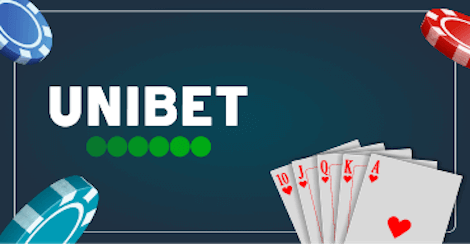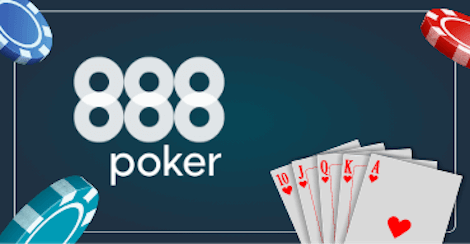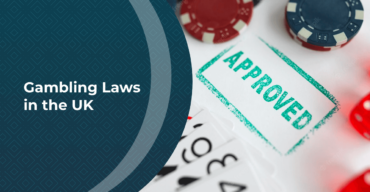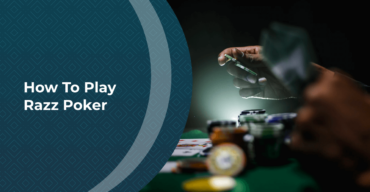Knowing how to manage your bankroll in poker is an important part of the game. If you lack good money management skills, you’re doomed to fail regardless of how well you play cards.
Just like everything else with this game, poker bankroll management comes down to discipline. You have to avoid high-risk and pricey poker buy-in options to ensure the steady growth of your poker money. Keep reading to find out how to hold onto your winnings, whether you’re playing at a brick-and-mortar casino or an online poker platform.
Separate Poker Bankroll From Daily Balance
Separating your personal and poker finances is a crucial part of managing your bankroll. Poker cash should be treated as a separate investment, and you shouldn’t be counting on this money to cover other expenses.
And while bankroll management in poker requires a certain degree of discipline, it’ll give you the confidence you need to make the right decisions at the tables without having to worry about losing your rent money. In short, you’ll be able to set clear boundaries on how much you can bet on each poker hand.
It won’t take you long to see the connection between bankroll management and successful poker tournaments.
Know When to Attack
Whether you’re playing at popular PayPal poker websites or any other gambling venues, the size of your bankroll or the supply of money is often determined by the amount of risk you’re willing to take. But although high risk offers a high reward, it can also cripple you financially.
Taking unnecessary risks with your poker cash can quickly push you out of the game. And when you’re not playing, you’re not learning and perfecting your poker strategy. Simply put, a risk-taker is almost certain to fail the poker bankroll challenge. You have to be patient and build your bankroll slowly by choosing bets where the reward outweighs the associated risk.
That said, there is also a time to play offensively. High-stakes games can be a highly lucrative affair if you know what you’re doing, especially when they involve recreational plays with blank checks. At these games, you shouldn’t hold back when you smell blood in the water.
Of course, if you’re just starting out and building up your bankroll, stick to games with the lowest poker buy-in and avoid experimenting with a lot of different variants of the game. By constantly switching game types, you run the risk of encountering formidable challengers who are experts in certain poker variants. While working on your bankroll management and poker strategy, you should focus on becoming exceptional in one type of game.
Also, there’s more to a standard or Bitcoin poker game than looking at the number of players or soft plays. Look for games with the lowest rake or ones with rakeback perks. Multi-table tournaments with low stakes usually have beatable rakes.
Know When to Step Back
It can be thrilling to play high-stakes games but pretty easy to burn through your entire bankroll. Few things in life give you the rush that you get when you play poker for money. But that’s exactly why you have to exercise a great deal of discipline and adhere to the boundaries set by your poker bankroll management strategy.
One of the ways to protect your poker money is to drop to lower stakes even when you have the cash to play higher. This takes the pressure off your bankroll while helping you grow your confidence. Boosting your winnings through poker bonuses can have a similar effect.
Picking poker games with low stakes can be challenging. As a general rule, there is higher variance in a multi-table poker tournament. Your bankroll management strategy will have to account for more buy-ins in these instances. The variance itself will depend on the skill level within the player pool. If there are more skilled players, there will be more variance.
Here are a few game-type examples and how they affect your bankroll:
No-Limit Cash Games
|
Blinds |
Buy-In | Needed bankroll | How many buy-ins |
| $0.01 / $0.02 | $2 | $40 – $80 | 20 – 40 |
| $0.05 / $0.10 | $10 | $200 – $400 | 20 – 40 |
| $0.10 / $0.25 | $25 | $500 – $1,000 |
20 – 40 |
Limit Cash Games
| Limits | Needed bankroll | How many buy-ins |
| $0.02 – $0.04 | $12 – $16 | 300 – 400 |
| $0.05 – $0.10 | $30 – $40 | 300 – 400 |
| $0.10 – $0.20 | $60 – $80 |
300 – 400 |
Single Table Sit and Gos
|
Buy-in |
Bankroll |
| $1.10 | $33 – $66 |
| $2.20 | $66 – $122 |
| $3.30 |
$99 – $198 |
Heads-Up Sit and Gos
| Buy-in | Bankroll |
| $1.10 | $22 – $44 |
| $2.20 | $44 – $88 |
| $3.30 |
$66 – $132 |
Multi-Table Online Tournaments
|
Buy-in |
Bankroll |
| $1.10 | $165 – $330 |
| $5.50 | $825 – $1,650 |
| $11 |
$1,650 – $3,300 |
Reduce Side Expenses
One more thing to keep an eye on is the non-poker expenses. The more you play, the better your poker strategy and bankroll management will be.
But you’ll also have to consider costs associated with traveling to different tournaments and games across the country. Other non-poker expenses include food and a range of activities between the actual games. These costs can quickly pile up. That’s why it’s important to keep side expenses as low as possible, or you run the risk of returning home empty-handed, despite winning a few games.
Monitor Your Bankroll
When dealing with cash games, a buy-in for poker can vary from one game to another. One of the tools you can use to help you figure out which limits to play at is the poker bankroll calculator. But there are specific poker applications that are designed to help you track your buy-ins, winnings, and losses.
Both Android and Apple stores have many high-quality apps that specialize in tracking these details. You can use this data to extract graphs or specific statistics to analyze before the next tournament. It’s one of the best ways to keep your poker bankroll under control. From live poker manager apps to poker income trackers, the poker bankroll management software is a real gamechanger.
Be the Master of Your Budget
These tips and tricks will help you hold on to your hard-earned winnings. A crucial part of the game plan is to avoid mixing your bankroll for online and live poker tournaments with your daily budget. Also, don’t use your poker cash to cover other expenses and keep an eye on the game variance. If you follow our guidelines, you can focus on growing your bankroll with confidence while enjoying the game.
FAQ
How many buy-ins should my bankroll be?
The optimal number of buy-ins for cash games is 20. Depending on the blinds and your poker bankroll management abilities, you’ll have to set aside up to $80 to cover these buy-ins.
How do you manage a bankroll in poker?
Split your poker bankroll from daily expenses and don’t use poker cash for covering other costs. Also, watch out for poker variance and keep a close eye on expenses linked to traveling and accommodation during poker tournaments.
What bankroll do you need for poker?
Your bankroll should be able to cover up to 20 buy-ins to give you the confidence you need to be good at poker.






